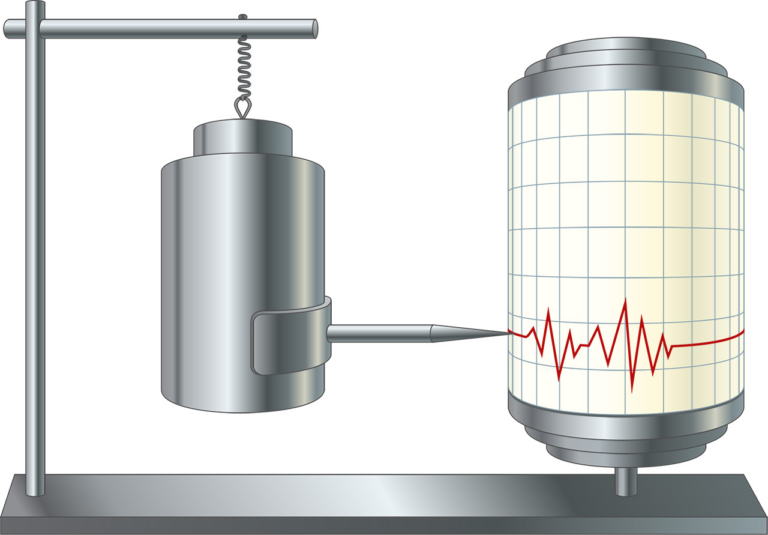Introduction
Micro-Electro-Mechanical Systems (MEMS) accelerometers are miniature sensors that measure acceleration using micro-electromechanical systems technology. These tiny devices, which combine mechanical and electronic components on a single chip, have revolutionized various industries by enabling precise motion sensing in a compact, low-cost package. From smartphones to automotive safety systems, MEMS accelerometers play a crucial role in modern technology, offering high sensitivity and low power consumption for a wide range of applications.
What is a MEMS Accelerometer?
MEMS accelerometers are sensors that measure acceleration using micro-electromechanical systems technology. These devices consist of microscopic mechanical and electronic components integrated onto a silicon chip, typically measuring between 1 and 100 micrometers in size (Andrejašiˇc & Poberaj, 2008). At their core is a small proof mass suspended by springs, which moves in response to acceleration forces, allowing the sensor to detect changes in velocity and convert them into electrical signals.
How Do MEMS Accelerometers Work?
The working principle of MEMS accelerometers is based on a mass-spring system. Here’s a step-by-step explanation of how it works:
- Suspended Mass and Springs: The proof mass is suspended in a way that allows it to move in response to acceleration. When the device experiences acceleration, the mass moves relative to its frame.
- Capacitance Change: The movement of the proof mass changes the distance between it and fixed electrodes, altering the capacitance (the ability to store an electric charge) between them. This change in capacitance is proportional to the acceleration experienced by the device.
- Sensing and Processing: The change in capacitance is detected by the device’s circuitry, which converts it into an electrical signal. This signal is then processed to determine the amount of acceleration.
- Output: The processed signal is output as a voltage that can be read by other electronic systems, such as a microcontroller or a computer.
Sensing Mechanism
The most common sensing mechanism in MEMS accelerometers is capacitive sensing. This method involves measuring the change in capacitance caused by the movement of the proof mass. Capacitive sensing is known for its high accuracy, stability, and low power consumption (Analog Devices, 2015).
Types of MEMS Accelerometers
There are two primary types of MEMS accelerometers:
- Variable Capacitive (VC) MEMS Accelerometers: These are high-sensitivity devices used for low-range applications, such as structural monitoring and constant acceleration measurements. They offer excellent performance in low-frequency and static acceleration measurements (Tai, YC., 2012).
- Piezoresistive (PR) MEMS Accelerometers: These are used for high-range, low-sensitivity applications, such as measuring shock and blast forces. They are less sensitive to temperature changes and are often used in harsh environments. PR accelerometers can withstand higher g-forces compared to VC accelerometers (Tai, YC., 2012).
Applications of MEMS Accelerometers
MEMS accelerometers are used in a wide range of applications due to their small size, low cost, and high precision.
Consumer Electronics
In smartphones and tablets, MEMS accelerometers detect screen orientation and enable motion-based applications, such as gaming and fitness tracking. They also play a crucial role in image stabilization for cameras (SkyMEMS, n.d).
Automotive
In the automotive industry, MEMS accelerometers are used in airbag systems to detect collisions and deploy airbags. They also play a crucial role in vehicle stability control systems and advanced driver assistance systems (ADAS) (Jin, L., 2021).
Industrial
MEMS accelerometers are used in machinery for vibration monitoring and predictive maintenance to prevent equipment failure. They are also employed in structural health monitoring systems for buildings and bridges (Analog Devices, 2021).
Medical Devices
In medical devices, MEMS accelerometers are used to monitor physical activity, detect falls in wearable health monitors, and assist in gait analysis for rehabilitation purposes (SkyMEMS, n.d).
Aerospace
In aerospace, MEMS accelerometers are used in navigation systems to measure the acceleration of aircraft and spacecraft. They are also utilized in inertial measurement units (IMUs) for attitude and heading reference systems (Jin, L., 2021).
Advantages of MEMS Accelerometers
MEMS accelerometers offer several advantages:
- Small Size: Their compact size allows integration into small devices.
- Low Cost: Mass production techniques make them affordable.
- High Sensitivity: They can detect very small changes in acceleration.
- Low Power Consumption: Suitable for battery-operated devices.
- Reliability: MEMS accelerometers have no moving parts in the traditional sense, leading to high reliability and long operational life.
Recent Developments and Future Trends
Recent advancements in MEMS accelerometer technology include:
- Improved Performance: Newer MEMS accelerometers offer higher sensitivity, lower noise, and better temperature stability.
- Integration: Multi-axis accelerometers are being integrated with gyroscopes and magnetometers to create complete inertial measurement units on a single chip.
- AI and Machine Learning: The integration of AI algorithms with MEMS accelerometer data is enabling more sophisticated motion analysis and predictive maintenance applications.
- IoT Applications: MEMS accelerometers are becoming key components in IoT devices for smart homes, industrial IoT, and wearable technology (Yole Group. 2024).
Comparison with Other Accelerometer Technologies
While MEMS accelerometers dominate many applications due to their small size and low cost, other accelerometer technologies still have their place:
- Piezoelectric Accelerometers: These offer higher frequency response and are often used in vibration analysis of machinery.
- Optical Accelerometers: These provide high accuracy and are immune to electromagnetic interference, making them suitable for specific scientific and industrial applications.
- Capacitive Accelerometers: Traditional (non-MEMS) capacitive accelerometers are still used in some high-precision applications (Tai, YC., 2012).
MEMS accelerometers, however, offer the best balance of performance, size, and cost for most modern applications.
Conclusion
MEMS accelerometers are versatile and essential components in modern technology, enabling precise measurement of acceleration in various applications. Their ability to convert mechanical motion into electrical signals makes them invaluable in fields ranging from consumer electronics to industrial automation and aerospace. As technology continues to advance, MEMS accelerometers are likely to play an even more significant role in shaping our interconnected world.
References
- Andrejašiˇc, M., & Poberaj, I. (2008). MEMS Accelerometers. Faculty for Mathematics and Physics, Department of Physics. Retrieved from https://faculty.uml.edu/xwang/16.541/2010/MEMS_accelerometers.pdf on 2024-06-30
- Analog Devices. (2015). Accelerometer and Gyroscopes Sensors: Operation, Sensing, and Applications. Retrieved from https://www.analog.com/en/resources/technical-articles/accelerometer-and-gyroscopes-sensors-operation-sensing-and-applications.html on 2024-06-30
- Analog Devices. (2021). Why MEMS Accelerometers Are Becoming the Designer’s Best Choice for CBM Applications. Retrieved from https://www.analog.com/en/resources/technical-articles/why-memes-acceler-are-best-choice-for-cbm-apps.html on 2024-06-30
- Tai, YC. (2012). Introduction to MEMS. In: Zhou, Z., Wang, Z., Lin, L. (eds) Microsystems and Nanotechnology. Springer, Berlin, Heidelberg. https://doi.org/10.1007/978-3-642-18293-8_6
- SkyMEMS. (n.d). Benefits and Applications of MEMS Accelerometers. Retrieved from https://www.skymems.com/benefits-and-applications-of-mems-accelerometer on 2024-06-30
- Jin, L., 2021. Applications and Prospects of Mems Sensors in Automotive. Journal of Physics: Conference Series, 1884(1), 012010. IOP Publishing. DOI: 10.1088/1742-6596/1884/1/012010
- Yole Group. (2024). MEMS industry: after the storm, a brighter horizon? Retrieved from https://www.yolegroup.com/strategy-insights/mems-industry-after-the-storm-a-brighter-horizon/


